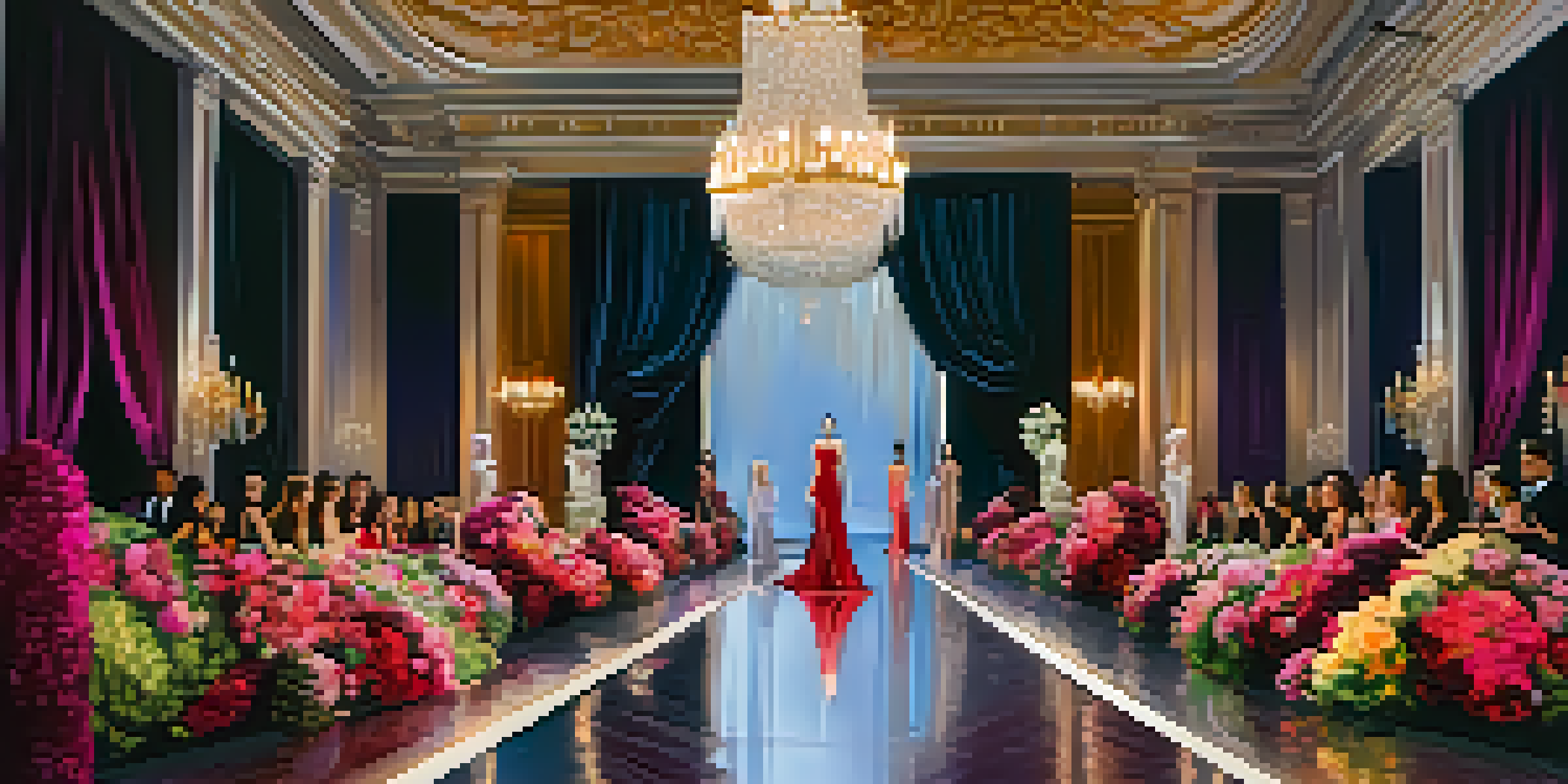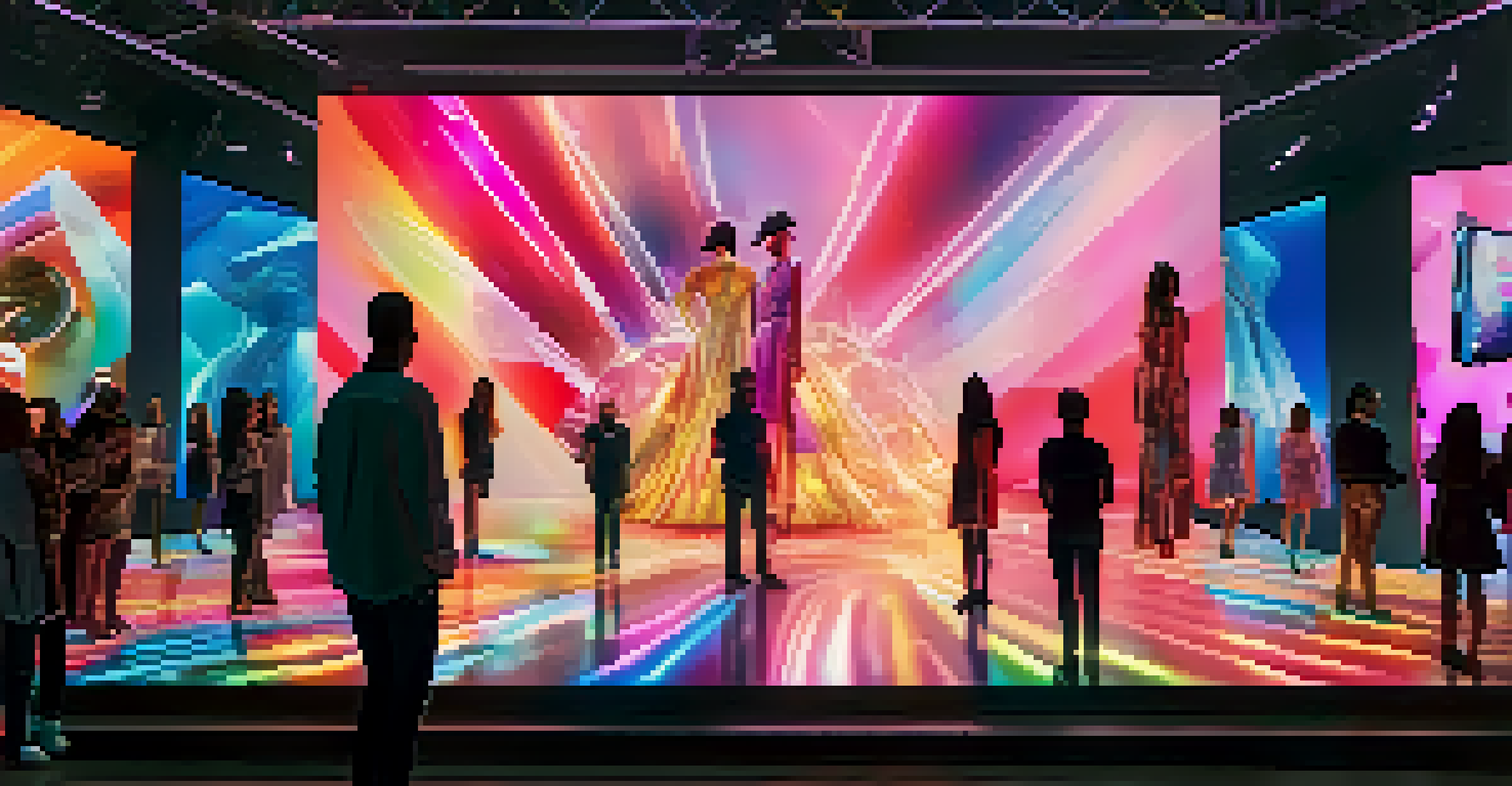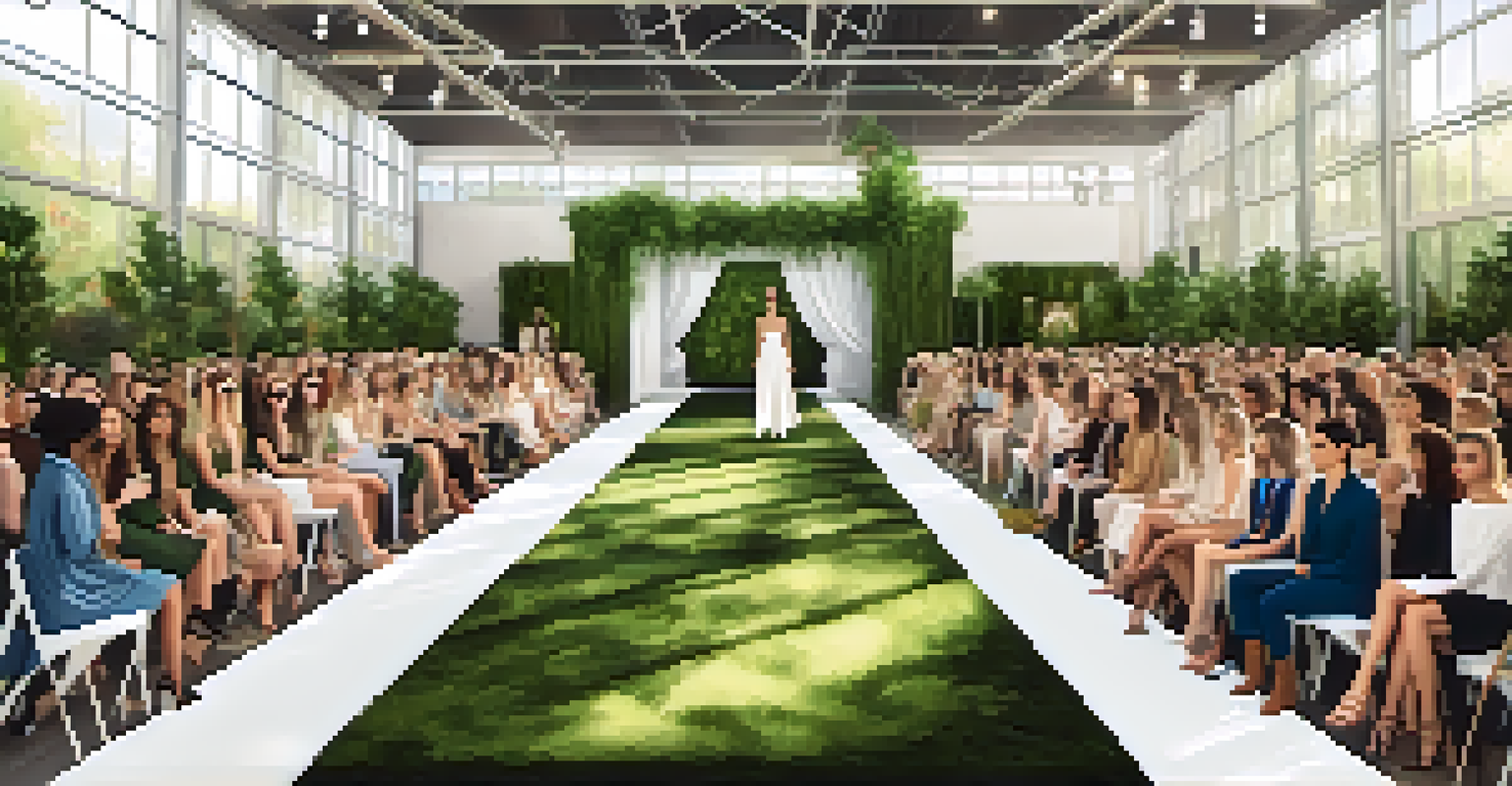The Evolution of Luxury Fashion Shows in the Digital Age

The Traditional Luxury Fashion Show: A Glimpse Back
Luxury fashion shows have long been the pinnacle of style and creativity, showcasing designer collections in grand venues. Historically, these events were exclusive, attracting celebrities, editors, and influencers, creating an air of mystery and allure. The theatricality of these shows—complete with elaborate sets and live music—set the stage for fashion as a form of art.
Fashion is not something that exists in dresses only. Fashion is in the sky, in the street, fashion has to do with ideas, the way we live, what is happening.
For decades, designers relied on these physical events to make a statement, establishing their brand identity and setting trends for the upcoming seasons. The anticipation built around a show, sometimes teased through cryptic social media posts, added to the excitement. It was a time when front-row seats were coveted, and the atmosphere crackled with fashion's elite.
However, as we moved toward the digital age, the traditional model faced new challenges. The rise of technology began to shift how fashion was consumed, leading to a pivotal transformation in how shows were presented and experienced.
The Rise of Digital Platforms in Fashion
With the advent of social media and live-streaming technology, the fashion industry began to embrace digital platforms as a way to reach a broader audience. Designers quickly realized that streaming their shows online could attract millions of viewers, far surpassing the limited number of attendees in a physical venue. This shift not only democratized access to fashion but also allowed brands to showcase their artistry on a global stage.

Platforms like Instagram and YouTube became essential tools for designers to build their brands and connect with consumers directly. This accessibility led to a new era where fans could engage with their favorite designers in real-time, commenting on and sharing content instantly. The digital audience craved interaction, turning fashion shows into interactive experiences rather than passive viewings.
Digital Transformation in Fashion
The rise of digital platforms has revolutionized fashion shows, making them more accessible and interactive for a global audience.
The digital format also introduced innovative ways to present collections, from 360-degree livestreams to virtual reality experiences. This evolution redefined the concept of a 'fashion show,' transforming it into a multimedia spectacle that could engage viewers beyond what was possible in a traditional setting.
The Impact of COVID-19 on Fashion Shows
The pandemic accelerated the digital transformation of luxury fashion shows, as global lockdowns forced brands to adapt quickly. Traditional shows were canceled or postponed, and designers had to pivot to virtual formats almost overnight. This unprecedented shift challenged the industry to rethink its approach while maintaining the glamor and excitement that define fashion.
Sustainability is no longer about doing less harm. It's about doing more good.
During this time, many brands experimented with pre-recorded shows, combining film, art, and fashion into captivating narratives. For example, some designers used cinematic storytelling to convey their collections, blurring the lines between fashion shows and short films. This creative adaptation not only kept the industry alive but also opened up new avenues for artistic expression.
As the world emerged from the pandemic, the lessons learned during this period of adaptation continued to influence how brands approached fashion shows. The blending of in-person and digital experiences became a norm, offering a hybrid model that catered to both exclusive audiences and global fans.
The Role of Influencers and Social Media
Influencers have become pivotal in shaping the fashion landscape, effectively acting as bridges between brands and consumers. Their ability to create authentic connections with followers has made them essential to the marketing strategies of luxury fashion houses. By inviting influencers to attend and showcase collections, brands can tap into their vast audiences, amplifying their reach.
Social media platforms, particularly Instagram and TikTok, allow influencers to share real-time content from fashion shows, providing followers with behind-the-scenes glimpses and immediate reactions. This instant access has transformed the way fashion is consumed and discussed, with audiences feeling more involved in the conversation. The excitement of a fashion show is no longer limited to those in attendance; it now extends to millions online.
Sustainability Takes Center Stage
As consumers demand eco-friendly practices, digital fashion shows offer a sustainable alternative to traditional events.
As a result, the influence of social media on fashion shows has shifted the focus from mere presentation to engagement. Designers are now crafting shows with the digital viewer in mind, creating visually stunning moments that are designed to be shared and celebrated online.
Sustainability in the Digital Era
The digital age has prompted a heightened awareness of sustainability within the fashion industry. As consumers become increasingly conscious of environmental issues, brands are reassessing their practices and looking for eco-friendly alternatives. Digital fashion shows can contribute to sustainability by reducing the carbon footprint associated with elaborate physical events.
Using digital platforms allows brands to showcase their collections without the need for travel and extensive resource consumption, making it a more sustainable option. Furthermore, many designers are incorporating sustainable practices into their collections, using digital storytelling to highlight these initiatives and resonate with eco-conscious audiences.
This commitment to sustainability not only attracts a new generation of consumers but also positions brands as responsible leaders in the industry. As luxury fashion continues to evolve, embracing sustainability in the digital realm will be essential for future success.
The Future of Luxury Fashion Shows
Looking ahead, the future of luxury fashion shows seems poised to embrace a blend of digital innovation and traditional elements. As brands continue to adapt to a rapidly changing landscape, we can expect to see more hybrid events that combine in-person experiences with virtual engagement. This approach promises to enhance accessibility while retaining the exclusivity that luxury fashion is known for.
Emerging technologies like augmented reality (AR) and artificial intelligence (AI) are set to play a significant role in shaping the next generation of fashion shows. These technologies will provide immersive experiences that allow viewers to interact with collections in unique ways, creating a deeper connection between the audience and the brand.
Future Blends Digital and Traditional
The future of luxury fashion shows will likely combine in-person experiences with digital innovations, enhancing accessibility and engagement.
Ultimately, the evolution of luxury fashion shows in the digital age reflects a broader cultural shift toward inclusivity and innovation. As the industry continues to embrace change, the future looks bright for both designers and fashion enthusiasts alike.
Conclusion: The New Era of Fashion Shows
The evolution of luxury fashion shows in the digital age marks a significant turning point for the industry. From the exclusive, opulent events of the past to the accessible, interactive experiences of today, the transformation has redefined how fashion is presented and consumed. This shift has opened doors for creativity and engagement, making fashion more inclusive than ever before.
As we navigate this new landscape, the fusion of digital and traditional elements will continue to shape the future of fashion shows. Brands that adapt to these changes while staying true to their identity will thrive in this dynamic environment. The journey ahead is exciting, with endless possibilities for innovation and connection.

In this new era, fashion is no longer just about clothing; it’s about storytelling, community, and sustainability. As we move forward, we can expect to see a fashion landscape that is richer, more diverse, and reflective of our shared values.